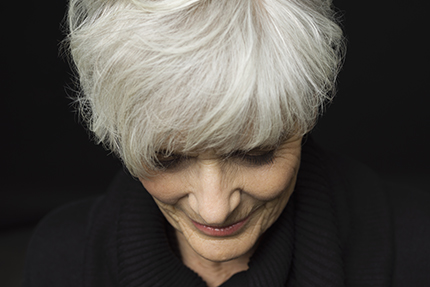LO Funds–Golden Age
Monthly newsletter–March 2025
Market review
Global markets were nervous in March, awaiting the outcome of the tariff discussion in April. The European market sold off, as did the US and China. The MSCI World was down about 2%, with European markets down the most, especially those with significant exposure to the car industry, where tariffs are already in effect. The UST 10-year yield was flat in March, at around 4.25%. The Bloomberg Commodity Index was up 3% intra-month, mostly driven by soft commodities, with energy flat for the month. The VIX ended up at around 22 versus 20 in the previous month. That is very surprising. The considerable uncertainty around tariffs has had an effect on markets but seemingly not on the VIX. If market fears materialise further, we expect the VIX to rise accordingly.
Performance review
We have written for months about the headwind caused by not owning the Mag7. That story changed when Trump was elected in November, with the market broadening out of these seven market darlings. March was another such month, but it feels more structural this time. On the back of rising uncertainty, risk premiums have been increasing globally, and there has been a shift out of US equity into European and Asian markets. The end result of all this volatility is that high-multiple stocks corrected and the Mag7 names have become funding for a shift to other geographies. There are two effects at work here – one is temporary and the other is more structural. The first effect is that uncertainty is starting to affect decision-making for businesses, putting big projects on hold. This has a trickle-down effect and, ultimately, results in lower economic growth. The reason why this might be a temporary effect is that we saw the Trump administration focus on tariffs and costs first, only to use those proceeds at a later stage to pump up the US economy in the form of tax reductions and a reduction in bureaucracy. Without judging the end result of these moves in terms of income inequality and business risks further down the line, we do think the possibility of a short-term uplift in the US macro should not be ruled out. First the pain, then the gain. Knowing the broader plan and having clarity on tariffs might be seen by the market as a clearing event in April and could start the (temporary) recovery. The second factor is more structural in nature and centres around the de-risking out of the US. As per data provided by FactSet through early March, the US share of global market capitalisation fell from about 51% in 2002 all the way to 30% between 2008 and 2012, until Fed policy started to kick in with ultra-cheap financing, driving money back into the US economy and returning the US share of global market capitalisation to an all-time high of about 52% in 2024. The Mag7 is the most likely explanation, but it is a tricky one, and we have referred to it as “chicken equity” in our past monthlies. Portfolio managers were closing their relative underweights to Mag7 because of stock price momentum, thereby pushing up the market cap even further. We believe that de-risking out of the US and re-investments into domestic economies will push down the US share of global market capitalisation. We are not sure what the ultimate number will be (as in: does it go all the way back to 30% levels or stabilise somewhere between 35%-45%), but the direction is clear. Beneficiaries are, in our view, European markets as well as China and some select countries in Latam (if politics remains accommodative in both regions).
In addition to the tailwind from not owning Mag7 and the macro-political event described above, March also saw subdued discretionary spending, which makes sense given the growing uncertainty. This caused our exposure to luxury goods and other discretionary items to drag down performance. However, our allocation to relative safe havens in healthcare and financials contributed positively.
The Fund was down in terms of absolute performance but outperformed relative to its reference index yet again in March, adding to the strong year-to-date profile resulting from the reversal trade. The three stocks that contributed most to the Fund’s performance in March were Storebrand (+15.8%), NN group (+9.2%) and Amundi (+8.7%). The three laggards were Tapestry (-17.3%), Kering (-26.7%) and Expedia (15%). At the end of the month, the portfolio’s positioning comprised Baby Boomer Brands 25%, eHealth 15%, Healthy Ageing 30%, and Pension Providers 27%.
Portfolio Activity
In February, we sold our position in Fu Shou Yuan, mainly due to liquidity concerns. We bought a position in L’Oreal after discussions with the analyst team, who flagged it as a high-quality company trading at an attractive valuation, with a re-acceleration in Chinese sales as a potential near-term catalyst. Furthermore, we trimmed some positions that increased above our model weights, and we reduced exposure to discretionary stocks given recession and tariff fears.
Outlook
After two years of highly disappointing investment results, lagging both the general index and the underlying earnings growth of the companies we invested in, it may feel challenging to remain optimistic about the ageing theme. Despite the 10% steady earnings growth our ageing strategy offers above what is achieved and expected for the general market, the valuation multiples of our ageing stocks fell considerably while the multiples of the general index rose. What could happen in 2025 to turn this around and bring the ageing theme back into investor favour? Most analysts, strategists and experts expect the momentum of the last two years to continue, with a double-digit equity market performance driven by a handful of US technology conglomerates. Therefore, it seems you need some contrarian courage to invest in the ageing theme. This is odd, given that the ageing of our societies is actually speeding up. The number of 65+ year-olds, and especially the number of 80+ year-olds, is steadily increasing in all major economies – North America, Europe, Japan and China – while the number of young people is declining. Combined, these countries should see a yearly increase of 2.6% in 65+ year-olds and 3.7% in 80+ year-olds over the next decade. More and more governments have started to adjust their financing models as the outlook for lower tax income and higher pension and healthcare expenses is becoming a cause for concern. The first pension reforms and changes to the healthcare system have been announced in countries like France, the Netherlands, South Korea, China and the US, and we expect more to follow. Ageing societies should provide a strong growth driver for companies focused on wealthy retired customers and elderly patients, or companies able to benefit from pension reforms. Our portfolio of ageing-focused companies should provide secular growth of 5-10% in sales and 10% in earnings per year for decades to come. While 10% growth is perhaps less than Technology and AI-driven companies are promising, it is available at a substantial discount. Our ageing strategy is currently on valuation multiples more than 25% lower than the general market indices, let alone compared to the major technology stocks.
On a more short-term horizon, we see two drivers that could unlock the value offered by ageing companies in 2025. For the first time this decade, we should see normal growth rates return to healthcare companies, as the pandemic no longer plays a role in the comparable base. However, it will probably be some months after the new US administration is installed before we know what the Trump headwind for healthcare will be, including the full effect of tariffs. Additionally, structurally higher interest rates, away from the 0-1% of the past decade, are providing pension companies with a solid opportunity to speed up growth, and on much better terms.
Yours sincerely,
The Golden Age Investment Team
Jeroen van Oerle & Christian Vondenbusch







